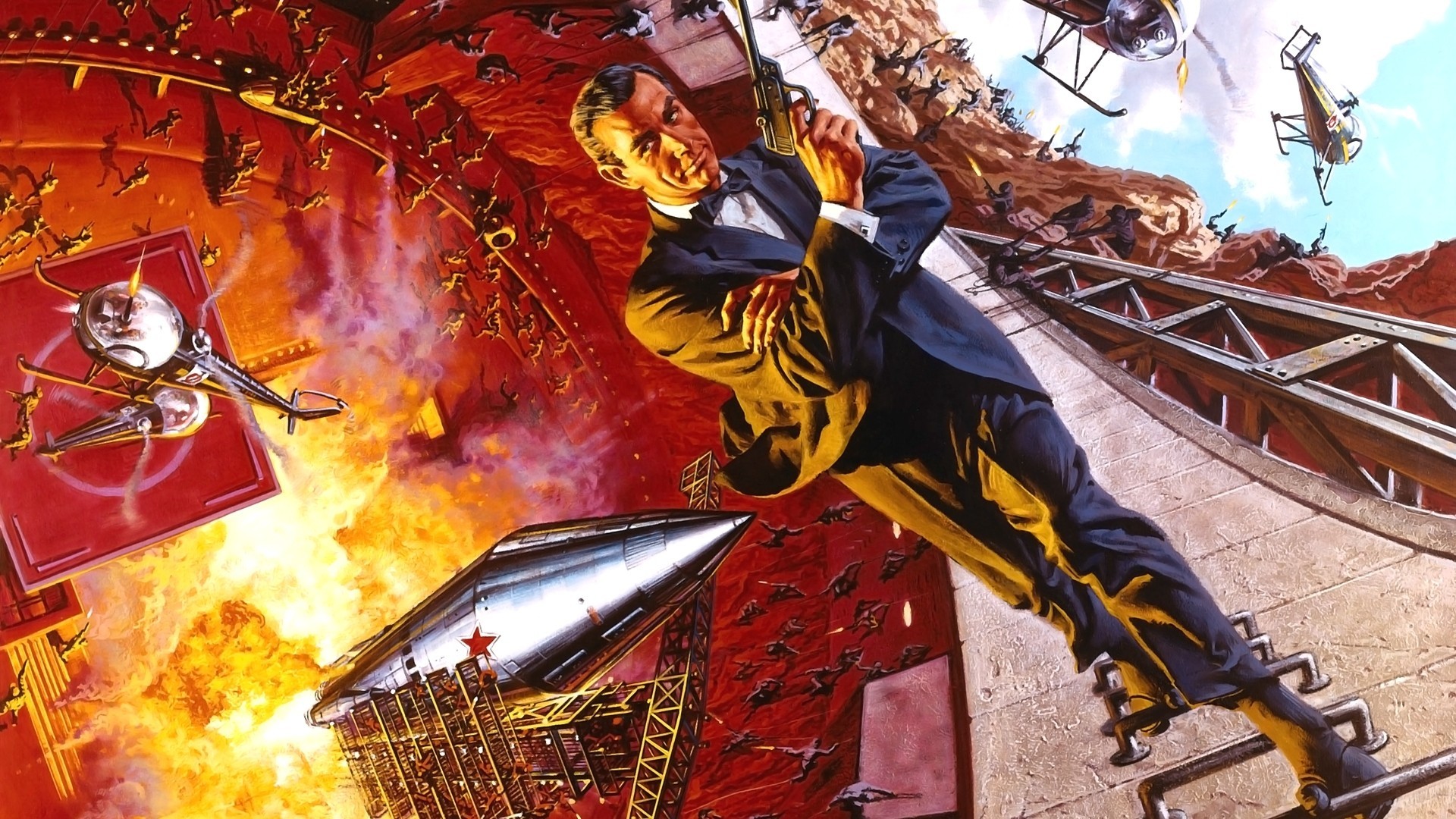You Only Live Twice (1967, Dir. Lewis Gilbert):
“You can come up with anything you like so far as the story goes,” [the Bond producers] told me, “but there are two things you mustn’t mess about with. The first is the character of Bond. That’s fixed. The second is the girl formula. That is also fixed.”
“What’s the girl formula?” I asked.
“There’s nothing to it. You use three different girls and Bond has them all.”
“Separately or en masse?”
One of them took a deep breath and let it out slowly. “How many Bond films have you seen?” he asked.
“Just one. The one with the crazy motorcar.”
“You’d better see the others right away. We’ll send them out to your house with a projector and someone to work it.” This was the first small hint I was to get of the swift, efficient, expansive way in which the Bond producers operated. Nobody else does things quite like them.
“So you put in three girls. No more and no less. Girl number one is pro-Bond. She stays around roughly through the first reel of the picture. Then she is bumped off by the enemy, preferably in Bond’s arms.”
“In bed or not in bed?” I asked.
“Wherever you like, so long as it’s in good taste. Girl number two is anti-Bond. She works for the enemy and stays around throughout the middle third of the picture. She must capture Bond, and Bond must save himself by bowling her over with sheer sexual magnetism. This girl should also be bumped off. Preferably in an original fashion.”
“There aren’t many of those left,” I said.
“We’ll find one,” they answered. “Girl number three is violently pro-Bond. She occupies the final third of the picture. and she must on no account he killed. Nor must she permit Bond to take any lecherous liberties with her until the very end of the story. We keep that for the fade-out.”
— Roald Dahl, “007’s Oriental Eyefuls,” Playboy magazine, 1967
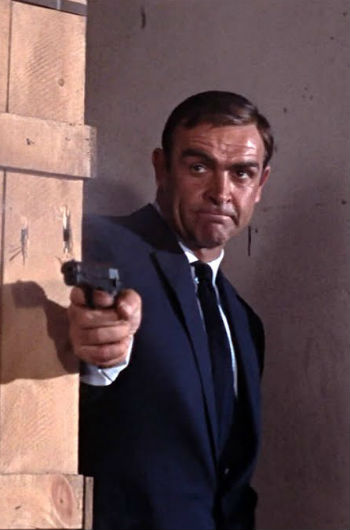 You only live twice;
You only live twice;
Once when you’re born,
And once when you look death in the face.
— Matsuo Basho, 17th century
If nothing succeeds like excess, then You Only Live Twice can only be termed a success. Hitting theaters at the tail end of the Summer of Love, it was both an apotheosis and a fare-thee-well. Soon afterwards movies (and life in general) would lose their innocence, as unredeemed anti-heroes — Godfathers, Easy Riders, Bonnie and Clyde, the Wild Bunch — would step to the fore. But there was time for a last bash before the deluge, and You Only Live Twice makes for one helluva party. Even curmudgeons like Pauline Kael had no choice but to surrender at this point: “It’s a product,” she sighed, “but probably the most consistently entertaining of the Bond packages up to the time.” In short, it was business as usual for 007, and business was big.
And yet there’s more to it than that. Like no other Bond film before and very few since, You Only Live Twice is a surrealist’s dream — or make that a fevered nightmare, a carnival of oddities, a bad trip to Neverland, where even Peter Pan (for what is Bond but every eternal boy’s adventure fantasy?) isn’t quite sure what’s going on. Not surprisingly, the movie was produced during fraught times. Sean Connery, tired of typecasting, ready to move on to other roles, and stewing over his lack of renumeration by Bond producers Albert Broccoli and Harry Saltzman, had announced that this would be his last outing as 007, which was kind of a problem since all the posters for the film had trumpeted “Sean Connery IS James Bond!” The producers had an additional headache in the form of Casino Royale, the comedy-parody-what-the-hell-is-this adaptation of Ian Fleming’s first Bond novel by freewheeling producer Charles K. Feldman. Released a few months before Twice, it didn’t gross nearly as much as the latter, but it suggested that an era was drawing to a close. What more could you do with James Bond when even Woody Allen was playing him in a movie?
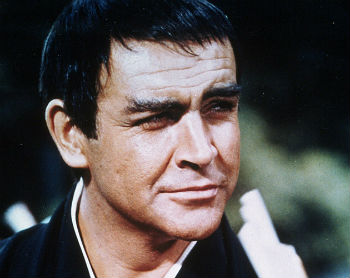 You turn to the man behind Charlie and the Chocolate Factory to write the screenplay, that’s what. Roald Dahl was more than Fleming’s equal as a writer, and with a lot more range besides, with everything from macabre chillers to heartwarming children’s fiction to his credit. A former World War II intelligence agent (and ladies’ man) like Fleming, Dahl also shared Fleming’s appetite for the bizarre, as well as his flair for the ludicrous — and the ludicrous has a field day in Twice. See if you can follow this chain of events: An American space capsule is swallowed whole by an enemy capsule (shades of a fairy tale there), and the U.S. and Soviet Union, each blaming the other, are ready to push the big red button. So naturally Bond must fake his own death so he can have “a little more elbow room” to investigate (never mind that he’s identified almost immediately by the baddies), and is literally shot headfirst via torpedo tube into a Japan up to its ears in Orientalism and futurism, where he eventually must dress up as a Japanese fisherman in order to infiltrate a SPECTRE base hidden inside a volcano. Along the way, he must endure a Vodka martini stirred not shaken (Siamese vodka, what an indignity!), actually has a man say “I love you” to him (it’s a code, but still), and even gets married to a Japanese diving girl (Mie Hama) who isn’t even named in the film but is listed in the credits as “Kissy,” which is all one needs to know, after all.
You turn to the man behind Charlie and the Chocolate Factory to write the screenplay, that’s what. Roald Dahl was more than Fleming’s equal as a writer, and with a lot more range besides, with everything from macabre chillers to heartwarming children’s fiction to his credit. A former World War II intelligence agent (and ladies’ man) like Fleming, Dahl also shared Fleming’s appetite for the bizarre, as well as his flair for the ludicrous — and the ludicrous has a field day in Twice. See if you can follow this chain of events: An American space capsule is swallowed whole by an enemy capsule (shades of a fairy tale there), and the U.S. and Soviet Union, each blaming the other, are ready to push the big red button. So naturally Bond must fake his own death so he can have “a little more elbow room” to investigate (never mind that he’s identified almost immediately by the baddies), and is literally shot headfirst via torpedo tube into a Japan up to its ears in Orientalism and futurism, where he eventually must dress up as a Japanese fisherman in order to infiltrate a SPECTRE base hidden inside a volcano. Along the way, he must endure a Vodka martini stirred not shaken (Siamese vodka, what an indignity!), actually has a man say “I love you” to him (it’s a code, but still), and even gets married to a Japanese diving girl (Mie Hama) who isn’t even named in the film but is listed in the credits as “Kissy,” which is all one needs to know, after all.
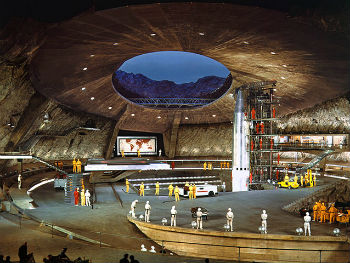 As you can see from that plot synopsis (and the excerpt that opens this review), Mr. Dahl had a little bit of fun with the Bond universe. Most of You Only Live Twice‘s invention lies in the asides rather than in the nuts and bolts of the narrative; the story is basically a clothes-rack to hang ever-more outlandish stunts, sets, and locales upon. But what superbly outlandish stunts, sets, and locales! Freddie Young, David Lean’s cinematographer, captures Japan’s cities and countryside with panoramic aplomb. The action scenes now involve ninjas, piranhas, helicopters with industrial magnets, and a Q-branch autogyro bristling with every weapon known to man (naturally all of them are utilized). Topping it all is the giant volcano lair, so extravagant that the mere phrase “volcano lair” has become shorthand for cinematic overkill, and it doesn’t matter because you can only admire the expansiveness of Ken Adam’s production designs.
As you can see from that plot synopsis (and the excerpt that opens this review), Mr. Dahl had a little bit of fun with the Bond universe. Most of You Only Live Twice‘s invention lies in the asides rather than in the nuts and bolts of the narrative; the story is basically a clothes-rack to hang ever-more outlandish stunts, sets, and locales upon. But what superbly outlandish stunts, sets, and locales! Freddie Young, David Lean’s cinematographer, captures Japan’s cities and countryside with panoramic aplomb. The action scenes now involve ninjas, piranhas, helicopters with industrial magnets, and a Q-branch autogyro bristling with every weapon known to man (naturally all of them are utilized). Topping it all is the giant volcano lair, so extravagant that the mere phrase “volcano lair” has become shorthand for cinematic overkill, and it doesn’t matter because you can only admire the expansiveness of Ken Adam’s production designs.
You Only Live Twice is a circus, but as with all circuses, the sinister lurks behind every laugh. The malevolence can be traced to Fleming’s novel, wherein a widowed, broken Bond struggles to regain his mojo in a strange land. Instead of space capsules and volcanos, we get a castle, a garden of death, and a final confrontation with SPECTRE chieftain Ernst Stavro Blofeld, who has gone mad from syphilis and tromps around in knight’s costume, lopping off the heads of young Japanese students all too willing to commit suicide. Feel free to laugh at that, but instead of snickering at his own ridiculousness, Fleming goes for emotional resonance. Already close to death from cancer, he invests the book with a fatalism that lingers long after the goofiness fades from memory. As the epigraph from Basho at the top suggests, Bond “dies” and is resurrected, achieving the immortality his author would never attain. While You Only Live Twice the movie doesn’t have a hook nearly as gut-wrenching, it has a similar pull: it flits back and forth from the sublime to the eerie to the ridiculous to the awe-inspiring, sometimes all within the same scene. The idea of a capsule “eating” another capsule sounds ridiculous on the face of it, but who can forget the spooky sight of the Yank astronaut getting his lifeline snipped, drifting away into oblivion? We can snigger at Bond’s ally Tiger Tanaka (Tetsuro Tamba) when he states baldly, “In Japan, men come first, women come second,” but that doesn’t lessen our sympathy for perky female agent Aki (Akiko Wakabayashi) when she’s assassinated via poison inching its way slowly down a thread, like a spider gliding over to its prey. You Only Live Twice is a carnival, all right — a carnival with fangs.
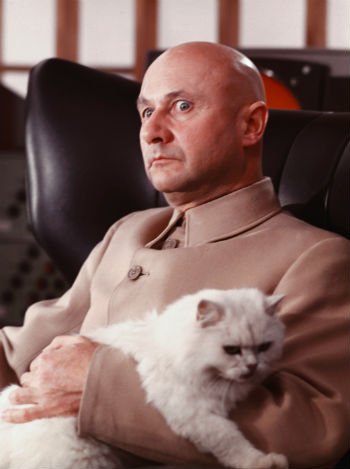 Director Lewis Gilbert, better known for low-key comedy dramas like Alfie and Educating Rita, proves to be skillful with these ominous moments as well as the bombast. Unlike Thunderball, the film breezes by, and if the story seems perfunctory at best, give Gilbert credit for recognizing that shortcoming and focusing on the good stuff: how the sun breaks over the Sea of Japan at dawn, a wide shot of Bond sprinting across a Kobe rooftop as he takes out henchmen left and right, the sight of hundreds of ninjas rappelling down into that volcano, the neon glow of Tokyo at night. As pure cinematic sensation, You Only Live Twice has it all over the previous Bond entries. Gilbert had much to contend with in making the film; in addition to the logistics of filming in a country that went crazy at the sight of Connery in their midst, he had to direct Japanese actors who couldn’t handle English (Mie Hama, who was eventually dubbed in that film, was in danger of losing her job because of her language deficiencies, and threatened seppuku, which was enough for the skittish producers to bring her back to the set), and figure out a last-minute replacement for actor Jan Werich, who simply wasn’t cutting the mustard as Blofeld. Taking over for Werich was Donald Pleasance, who was about as far from the description of Blofeld in Fleming’s books (commanding, bulky, methodical) as you could get, but his typically off-kilter performance is one of the iconic elements the film has bestowed on cinema history. No Pleasance, no Doctor Evil — and no Austin Powers movies (which might not be a horrible thing, come to think of it). Speaking of iconic, mention must be made of John Barry’s score, his most melodic contribution to the series, and Nancy Sinatra’s title theme — dreamy, lyrical, yet ominous, it ain’t a Shirley Bassey number, but it’s a pitch-perfect representation of the film’s tone, and might be the most haunting Bond tune of them all.
Director Lewis Gilbert, better known for low-key comedy dramas like Alfie and Educating Rita, proves to be skillful with these ominous moments as well as the bombast. Unlike Thunderball, the film breezes by, and if the story seems perfunctory at best, give Gilbert credit for recognizing that shortcoming and focusing on the good stuff: how the sun breaks over the Sea of Japan at dawn, a wide shot of Bond sprinting across a Kobe rooftop as he takes out henchmen left and right, the sight of hundreds of ninjas rappelling down into that volcano, the neon glow of Tokyo at night. As pure cinematic sensation, You Only Live Twice has it all over the previous Bond entries. Gilbert had much to contend with in making the film; in addition to the logistics of filming in a country that went crazy at the sight of Connery in their midst, he had to direct Japanese actors who couldn’t handle English (Mie Hama, who was eventually dubbed in that film, was in danger of losing her job because of her language deficiencies, and threatened seppuku, which was enough for the skittish producers to bring her back to the set), and figure out a last-minute replacement for actor Jan Werich, who simply wasn’t cutting the mustard as Blofeld. Taking over for Werich was Donald Pleasance, who was about as far from the description of Blofeld in Fleming’s books (commanding, bulky, methodical) as you could get, but his typically off-kilter performance is one of the iconic elements the film has bestowed on cinema history. No Pleasance, no Doctor Evil — and no Austin Powers movies (which might not be a horrible thing, come to think of it). Speaking of iconic, mention must be made of John Barry’s score, his most melodic contribution to the series, and Nancy Sinatra’s title theme — dreamy, lyrical, yet ominous, it ain’t a Shirley Bassey number, but it’s a pitch-perfect representation of the film’s tone, and might be the most haunting Bond tune of them all.
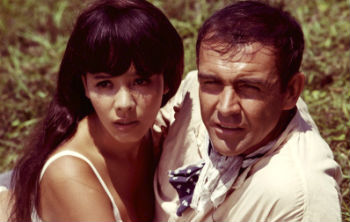 You Only Live Twice, unlike the book, is only tangentially about death and rebirth, yet Connery’s imminent departure from the Bond role casts a melancholic shadow over the proceedings. Clearly not giving a damn, he glides through the movie with nary a raised eyebrow or drop of sweat in sight, only coming alive when it comes time to butt heads with the latest hulking henchman, or press that self-destruct button to avert World War III. Surprisingly, Pauline Kael had praise for his performance: “Sean Connery’s James Bond isn’t the sleek, greasy-lipped dummy of the earlier films; playing the super-hero as a paunchy, rather bemused spectator, Connery gives him more character than he’s ever had before.” Connery would surely agree with the spectator part — once the key element in these movies, Bond was becoming a cog in the machine, a circus acrobat being put through his paces rather than a larger-than-life character. Ironically enough, the Bond producers probably agreed with that sentiment, and they were prepared to gamble on the notion that the man playing James Bond was less important than the brand itself. As an irony on top of irony, the movie following Connery’s departure, On Her Majesty’s Secret Service, would restore Bond’s primacy. You Only Live Twice has other aims in mind, and credit where credit is due: it accomplishes what it sets out to be, a spectacle-driven entertainment with some funhouse quirks up its sleeve. ■
You Only Live Twice, unlike the book, is only tangentially about death and rebirth, yet Connery’s imminent departure from the Bond role casts a melancholic shadow over the proceedings. Clearly not giving a damn, he glides through the movie with nary a raised eyebrow or drop of sweat in sight, only coming alive when it comes time to butt heads with the latest hulking henchman, or press that self-destruct button to avert World War III. Surprisingly, Pauline Kael had praise for his performance: “Sean Connery’s James Bond isn’t the sleek, greasy-lipped dummy of the earlier films; playing the super-hero as a paunchy, rather bemused spectator, Connery gives him more character than he’s ever had before.” Connery would surely agree with the spectator part — once the key element in these movies, Bond was becoming a cog in the machine, a circus acrobat being put through his paces rather than a larger-than-life character. Ironically enough, the Bond producers probably agreed with that sentiment, and they were prepared to gamble on the notion that the man playing James Bond was less important than the brand itself. As an irony on top of irony, the movie following Connery’s departure, On Her Majesty’s Secret Service, would restore Bond’s primacy. You Only Live Twice has other aims in mind, and credit where credit is due: it accomplishes what it sets out to be, a spectacle-driven entertainment with some funhouse quirks up its sleeve. ■

